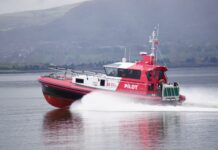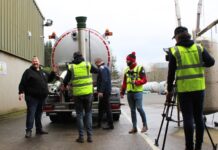Here, John Bosse from The Weather Company discusses how fleet operators can turn weather into decision-making information.
When a trucker pushes off from Point A with his cargo of freight due at Point B in two days, he has a mandated rest period of 10 hours after 11 hours of driving. This means that he must manage his route using pre-planned instructions from dispatch, whatever data he can glean from mobile apps and, if he can manage to boot up his system at a rest stop, laptop downloads from HQ.
But what about non-radar conditions like fog, icing, or high wind speeds that could threaten his safety when he is LTL on the last leg of his trip? Thankfully, this trucker has access to the latest, most accurate weather and traffic data to help him better plan his route.
Consider the peace of mind that could brought to him if he had access via an IOS mobile app solution that offers a clear, cohesive, single source for global weather and traffic speeds, construction, and other traffic incidents. Instead of relying on dispatch for updates that don’t create a clear picture or needing to visit multiple websites to gather this information, he has his route set with confidence and ease.
Business Case
Weather and traffic are the coffee-and-cream, steak-and-potatoes, oil-and-gas ground transportation components necessary to monitor conditions every time a rig is put into drive. From the trucker to the dispatch crew and distribution centres at either end of the trip, every moving part of this journey needs to know what the driving conditions will be to ensure driver and cargo safety, situational awareness, and operational efficiency in the movement of goods across states and countries around the world.
As the first and best in the industry to use weather and traffic data in a coordinated effort to guide freight logistics, The Weather Company can turn common weather reports and imagery into real, on-the-ground intelligence, letting users know where hazardous driving conditions like fog, high winds, and icing may be present.
Real-Time
While truckers are the figureheads for an industry reliant on this accurate data, dispatchers need to be able to monitor their moving fleet and plan for possible route disruptions, and distribution centres need to understand their own staffing needs to better plan for and attend to incoming shipments and pick-ups.
 Let’s go back to our lone trucker scenario: As he drives towards his destination, the dispatcher back at Point A is watching the company enroute fleet, monitoring their driving conditions to anticipate possible rerouting needs. A thunderstorm system in one region could affect 3 trucks, but the route for our truck driver is looking okay.
Let’s go back to our lone trucker scenario: As he drives towards his destination, the dispatcher back at Point A is watching the company enroute fleet, monitoring their driving conditions to anticipate possible rerouting needs. A thunderstorm system in one region could affect 3 trucks, but the route for our truck driver is looking okay.
At Point B, the second distribution centre, the warehouse is ready to receive the shipped goods. As the anticipated delivery time comes and goes, the manager checks his specialised mobile app and realises that traffic is at a standstill on one of the incoming major highways due to an accident. The truck and its driver are still miles away and won’t likely reach the dock for another few hours. The distribution centre, which was staffed with the expectation that workers would be unloading freight all afternoon, is now overstaffed with employees having nothing to do.
The data received allows the distribution manager to make a real-time decision: He reallocates his staff and adjusts schedules for later in the day to account for these unplanned delays. Operations and efficiency have been optimised and staffing issues solved using critical data.
While our scenario is fictional, similar ones play out every day. Ground transportation is heavily dependent on weather and traffic conditions to ensure that goods arrive on time to their destinations. Freight companies’ goals are to get the goods there but also ensure the safety of the drivers and manage the expectations of the distribution centres.
With the combined force of weather and traffic data from The Weather Company in a single IOS-based dashboard, logistics and freight companies – from dispatch to driver to distribution centre – can monitor, reroute, and optimise its ground transportation business from Point A to Point B every time.















